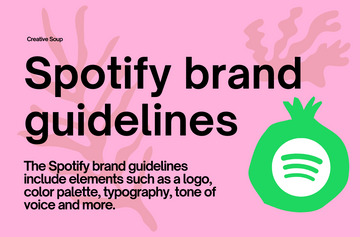Introduction
In today's fast-paced digital world, maintaining a consistent brand identity is crucial for success. Digital brand guidelines provide a framework for ensuring your brand remains cohesive across all online platforms. This guide will delve into the importance of digital brand guidelines and offer detailed insights on how to create and implement them effectively.
What Are Digital Brand Guidelines?

Definition and Purpose
Digital brand guidelines are a set of standards that outline how your brand should be represented across various digital platforms. These guidelines ensure that all visual and textual elements of your brand are consistent, helping to create a unified and recognizable brand identity.
Key Components
Key components of digital brand guidelines typically include visual elements such as logos, color palettes, and typography, as well as guidelines for brand voice and tone, content creation, and social media strategies.
Why Digital Brand Guidelines Matter
Brand Consistency Across Platforms
Maintaining consistency across all digital platforms is crucial for brand recognition. Digital brand guidelines provide a blueprint for how your brand should look and sound, ensuring that every piece of content aligns with your overall brand identity.
Enhancing Brand Recognition
A consistent brand identity helps build trust and loyalty among your audience. When your brand is easily recognizable, it becomes easier for customers to remember and prefer your products or services over competitors.
Developing Your Digital Brand Guidelines
Identifying Brand Values and Mission
Start by clearly defining your brand values and mission. These foundational elements will guide the creation of your digital brand guidelines and ensure that all brand activities align with your core principles.
Target Audience
Understanding your target audience is essential for creating effective digital brand guidelines. Consider the demographics, preferences, and behaviors of your audience to tailor your brand messaging and visuals accordingly.
Visual Elements of Digital Brand Guidelines

Logo Usage and Variations
Your logo is the face of your brand, so it's important to specify how it should be used across different platforms. Include guidelines on logo placement, size, and acceptable variations to maintain consistency.
Color Palette
Define a primary color palette that represents your brand. Include secondary and accent colors that complement the primary palette and provide flexibility for various design needs.
Typography
Choose a set of fonts that reflect your brand's personality. Specify which fonts should be used for headings, body text, and other elements, along with guidelines on font sizes and spacing.
Voice and Tone
Establishing Brand Voice
Your brand voice should reflect your brand's personality and values. Whether your brand is formal and professional or casual and friendly, ensure that your voice is consistent across all digital platforms.
Tone Adaptation for Different Platforms
While your brand voice should remain consistent, the tone may need to be adapted for different platforms. For example, your tone on LinkedIn may be more professional, while on Instagram it might be more casual and engaging.
Creating Brand Assets
Social Media Graphics
Create templates for social media posts that align with your brand guidelines. Consistent use of colors, fonts, and logos will help maintain brand recognition across all social media platforms.
Website Elements
Ensure that your website design reflects your brand guidelines. This includes the use of consistent colors, fonts, and imagery, as well as a cohesive layout and navigation structure.
Email Templates
Design email templates that incorporate your brand's visual and textual elements. Consistent email design helps reinforce your brand identity and improves the overall user experience.
Content Guidelines
Blog Post Formats
Define the structure and style of your blog posts. Include guidelines on headings, subheadings, font usage, and image placement to ensure a consistent and professional appearance.
Social Media Content
Outline the types of content that should be shared on each social media platform. Provide examples and templates for posts, ensuring that all content aligns with your brand voice and visual guidelines.
Video Content
Create guidelines for video content, including style, tone, and visual elements. Consistent video branding helps build a recognizable and professional brand presence.
Social Media Guidelines
Platform-Specific Strategies
Each social media platform has its own unique features and audience. Develop specific strategies for each platform, focusing on how to best engage your audience and promote your brand.
Posting Frequency and Timing
Determine the optimal posting frequency and timing for each platform. Consistent posting schedules help keep your audience engaged and improve your brand's visibility.
Community Engagement
Engage with your audience by responding to comments, messages, and reviews. Positive interactions help build a loyal community and enhance your brand's reputation.
Implementing Digital Brand Guidelines
Training Your Team
Ensure that all team members understand and follow the digital brand guidelines. Provide training sessions and resources to help them implement the guidelines effectively.
Tools and Resources
Utilize tools and resources to streamline the implementation of your brand guidelines. This may include design software, content management systems, and social media management tools.
Monitoring and Updating Guidelines
Regular Reviews
Regularly review your digital brand guidelines to ensure they remain relevant and effective. This will help you identify any areas that need improvement or updates.
Adapting to Trends
Stay up-to-date with digital trends and adapt your brand guidelines accordingly. This will help keep your brand fresh and competitive in the ever-changing digital landscape.
Case Studies of Successful Digital Brand Guidelines
Analysis of Top Brands' Strategies
Examine the digital brand guidelines of top brands to understand what makes them successful. Analyze their visual elements, content strategies, and overall brand consistency.
Key Takeaways
Identify key takeaways from these case studies that you can apply to your own brand guidelines. Learn from the successes and mistakes of other brands to enhance your own digital presence.
Common Mistakes to Avoid
Inconsistency Issues
Avoid inconsistencies in your brand elements, as they can confuse your audience and weaken your brand identity. Ensure that all team members adhere to the guidelines to maintain consistency.
Overcomplicating Guidelines
Keep your digital brand guidelines clear and concise. Overcomplicated guidelines can be difficult to follow and may lead to inconsistencies.
FAQs
What are digital brand guidelines?
Digital brand guidelines are a set of rules that define how your brand should be represented across digital platforms, ensuring consistency in visual and textual elements.
Why are digital brand guidelines important?
They ensure a consistent brand identity, enhance brand recognition, and help build trust and loyalty among your audience.
How do you create digital brand guidelines?
Start by defining your brand values and mission, understanding your target audience, and then outlining visual elements, voice, tone, and content guidelines.
What should be included in digital brand guidelines?
Include guidelines for logo usage, color palettes, typography, brand voice and tone, content creation, and social media strategies.
How often should digital brand guidelines be updated?
Regularly review and update your guidelines to keep them relevant and effective, adapting to new trends and changes in the digital landscape.
Conclusion
Creating and implementing effective digital brand guidelines is essential for maintaining a consistent and powerful online presence. By following these guidelines, you can ensure that your brand remains cohesive and recognizable across all digital platforms, helping to build trust and loyalty among your audience.






